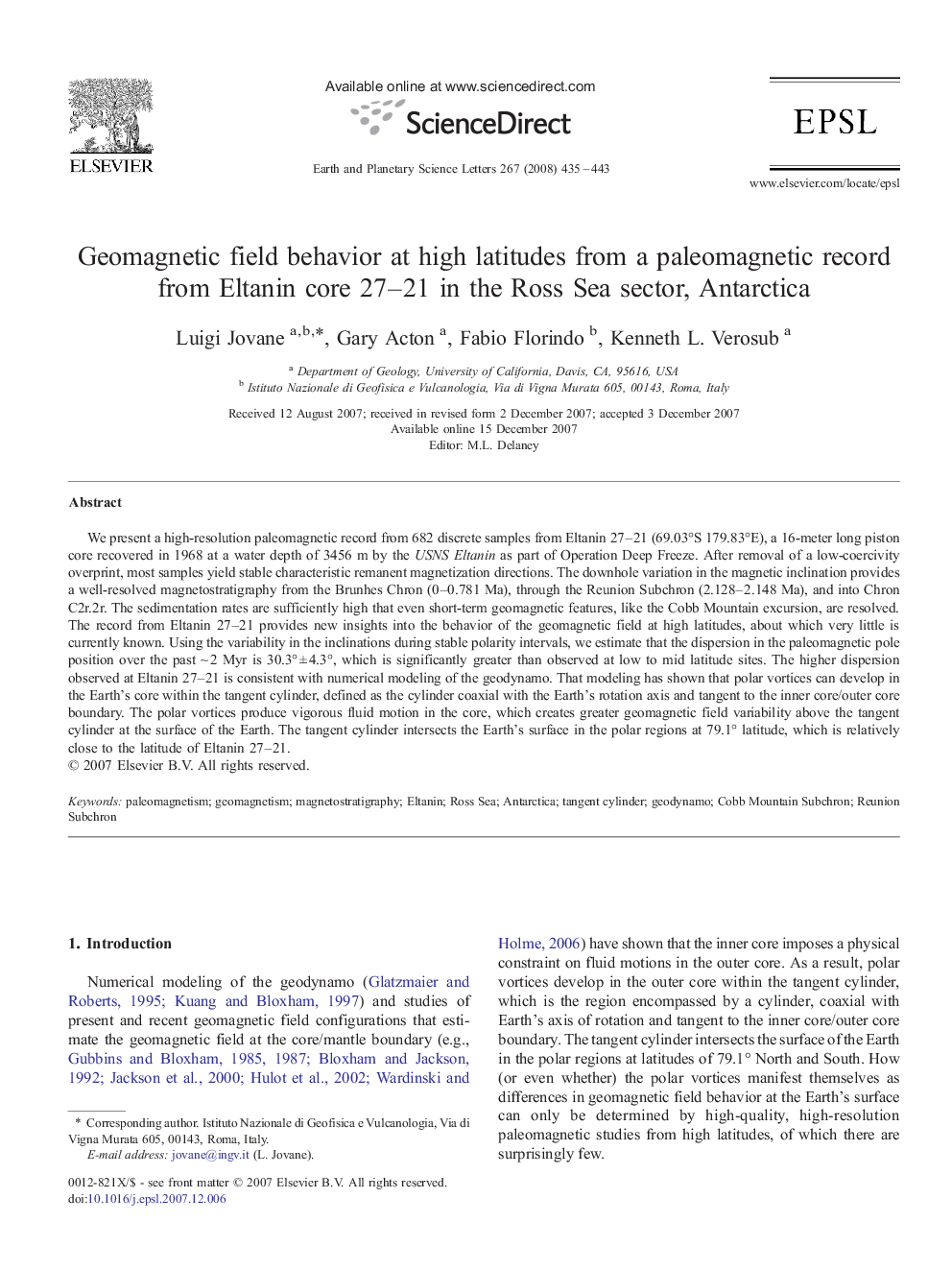| Article ID | Journal | Published Year | Pages | File Type |
|---|---|---|---|---|
| 4679952 | Earth and Planetary Science Letters | 2008 | 9 Pages |
We present a high-resolution paleomagnetic record from 682 discrete samples from Eltanin 27–21 (69.03°S 179.83°E), a 16-meter long piston core recovered in 1968 at a water depth of 3456 m by the USNS Eltanin as part of Operation Deep Freeze. After removal of a low-coercivity overprint, most samples yield stable characteristic remanent magnetization directions. The downhole variation in the magnetic inclination provides a well-resolved magnetostratigraphy from the Brunhes Chron (0–0.781 Ma), through the Reunion Subchron (2.128–2.148 Ma), and into Chron C2r.2r. The sedimentation rates are sufficiently high that even short-term geomagnetic features, like the Cobb Mountain excursion, are resolved. The record from Eltanin 27–21 provides new insights into the behavior of the geomagnetic field at high latitudes, about which very little is currently known. Using the variability in the inclinations during stable polarity intervals, we estimate that the dispersion in the paleomagnetic pole position over the past ~ 2 Myr is 30.3° ± 4.3°, which is significantly greater than observed at low to mid latitude sites. The higher dispersion observed at Eltanin 27–21 is consistent with numerical modeling of the geodynamo. That modeling has shown that polar vortices can develop in the Earth's core within the tangent cylinder, defined as the cylinder coaxial with the Earth's rotation axis and tangent to the inner core/outer core boundary. The polar vortices produce vigorous fluid motion in the core, which creates greater geomagnetic field variability above the tangent cylinder at the surface of the Earth. The tangent cylinder intersects the Earth's surface in the polar regions at 79.1° latitude, which is relatively close to the latitude of Eltanin 27–21.
